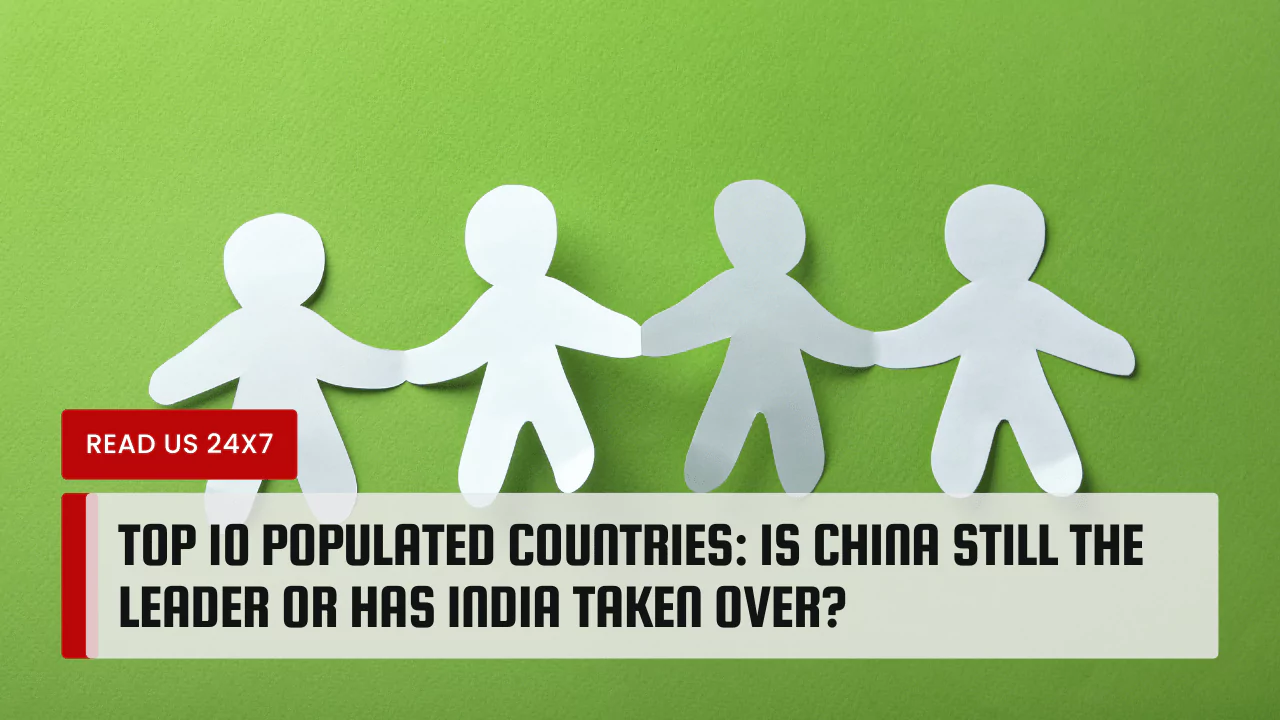For decades, China held the undisputed title of the world’s most populous nation. However, a recent shift has occurred. India has officially beaten China and now has the most people in the world. This demographic change has significant implications, not just for these two giants, but for the world as a whole.
Why Population Size Matters?
Population size is a crucial factor in a nation’s economic and geopolitical standing. A large population signifies a vast labor force, a significant consumer market, and potential for innovation. However, it also presents challenges in managing resources, infrastructure, and social welfare programs.
Top 10 Most Populous Countries
| Rank | Country Name | 2024 Population | 2023 Population | Growth Rate | World % |
|---|---|---|---|---|---|
| 1 | India | 1,441,719,852 | 1,428,627,663 | 0.92% | 18.01% |
| 2 | China | 1,425,178,782 | 1,425,671,352 | -0.03% | 17.80% |
| 3 | United States of America | 341,814,420 | 339,996,563 | 0.53% | 4.27% |
| 4 | Indonesia | 279,798,049 | 277,534,122 | 0.82% | 3.50% |
| 5 | Pakistan | 245,209,815 | 240,485,658 | 1.96% | 3.06% |
| 6 | Nigeria | 229,152,217 | 223,804,632 | 2.39% | 2.86% |
| 7 | Brazil | 217,637,297 | 216,422,446 | 0.56% | 2.72% |
| 8 | Bangladesh | 174,701,211 | 172,954,319 | 1.01% | 2.18% |
| 9 | Russia | 143,957,079 | 144,444,359 | -0.34% | 1.80% |
| 10 | Ethiopia | 129,719,719 | 126,527,060 | 2.52% | 1.62% |
Population Trends and Demographics of China and India
China’s one-child policy, implemented in 1979, significantly curbed population growth. This policy has been relaxed in recent years, but its impact on demographics is evident in China’s aging population. India, on the other hand, has a much younger population with a higher fertility rate. This difference in population trends is the key reason for India’s rise to the top.
Factors Driving Population Growth
Several factors contribute to population growth, including:
- Fertility Rates: Countries with higher birth rates tend to have faster population growth. Socioeconomic factors like education levels and access to family planning services can influence fertility rates.
- Life Expectancy: Improvements in healthcare and living standards lead to longer lifespans, contributing to population growth. However, this also creates a strain on social security systems designed for shorter lifespans.
- Immigration: Inflows of immigrants can boost a country’s population. Immigration policies can be a tool to address labor shortages or demographic imbalances.
Impact on the Economy and Society
A substantial population presents both advantages and disadvantages. On one hand, it offers a vast labor pool, a sizable consumer base, and the potential for economic expansion. Furthermore, a youthful population contributes to innovation and entrepreneurship. However, it can also strain resources such as water, food, and energy. Additionally, growing populations necessitate significant investments in infrastructure, education, and healthcare.
Challenges and Opportunities for the Most Populous Countries
The most populated countries face a range of challenges, including:
- Resource Scarcity: Managing water, food, and energy resources efficiently becomes crucial to sustain a large population. Investment in renewable energy sources and sustainable agricultural practices are essential.
- Infrastructure Strain: Expanding populations require investments in transportation, housing, and sanitation systems. Failure to meet this demand can lead to social unrest and hinder economic development.
- Aging Population: Rapidly aging populations strain social security systems and healthcare resources, leading to potential funding shortfalls and increased pressure on healthcare providers.
Opportunities for the Most Populous Countries
Despite the challenges, large populations also present significant opportunities:
- Economic Growth: A large and skilled workforce can fuel economic growth. Investing in education and training programs is essential to equip the population with the skills needed for a modern economy.
- Innovation: A large pool of talent fosters innovation and entrepreneurship. Encouraging research and development can lead to technological advancements and economic diversification.
- Demographic Dividend: A young population creates a “demographic dividend” where the working-age population outnumbers dependents. This window of opportunity allows for accelerated economic growth if harnessed effectively.
The Future Landscape
The population shifts we see today will have lasting impacts on the global landscape. Here are some potential scenarios:
- Economic Power Shift: India’s rise as the most populous nation could lead to a shift in global economic power. Its large and young workforce has the potential to propel it to a leadership position in the global economy.
- Resource Competition: Competition for resources like water, food, and energy is likely to intensify as populations grow. International cooperation and sustainable resource management will be crucial to avoid conflict.
- Geopolitical Implications: The population dynamics of various countries will influence their geopolitical standing. Large populations can provide a larger military base but also strain resources needed for national defense.



